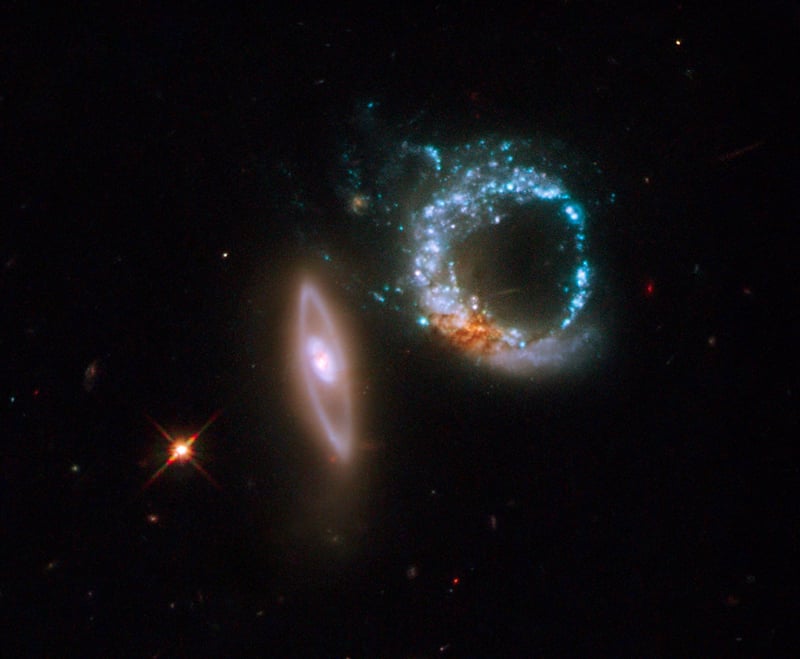[/caption]
Yes! (*Fist pump*) The Hubble Space Telescope is back in business.
After overcoming a few glitches in bringing the orbiting Hubble back online, engineers and scientists aimed the telescope's prime camera, the Wide Field Planetary Camera 2 (WFPC2), at a pair of gorgeous-looking interacting galaxies called Arp 147. Scientists say the image demonstrates the camera is working exactly as it was before going offline, thereby scoring a "perfect 10" both for performance and beauty. And the two galaxies are oriented so they look like the number 10! How cool is that!
Two anomalies in Hubble's restart caused the B-side of the Science Instrument Control and Data Handling System (SI C&DH-B) and the Advanced Camera for Surveys (ACS) Solar Blind Channel (SBC) to return to a 'safe hold' status on October 16. Engineers worked through the problem, and on Oct. 25, the telescope's science computer began to send commands to the WFPC2. What a relief!
Additional commanding allowed engineers on the ground to assess the instrument's state of health and verify the contents of the camera's microprocessor memory.
And so, this first "post-recovery" image shows the two interacting galaxies. The left-most galaxy, or the "one" in this image, is relatively undisturbed apart from a smooth ring of starlight. It appears nearly on edge to our line of sight. The right-most galaxy, resembling a zero, exhibits a clumpy, blue ring of intense star formation.
The blue ring was most probably formed after the galaxy on the left passed through the galaxy on the right. Just as a pebble thrown into a pond creates an outwardly moving circular wave, a propagating density wave was generated at the point of impact and spread outward. As this density wave collided with material in the target galaxy that was moving inward due to the gravitational pull of the two galaxies, shocks and dense gas were produced, stimulating star formation.
The dusty reddish knot at the lower left of the blue ring probably marks the location of the original nucleus of the galaxy that was hit.
Arp 147 appears in the Arp Atlas of Peculiar Galaxies, compiled by Halton Arp in the 1960s and published in 1966. This picture was assembled from WFPC2 images taken with three separate filters. The blue, visible-light, and infrared filters are represented by the colors blue, green, and red, respectively.
The galaxy pair was photographed on October 27-28, 2008. Arp 147 lies in the constellation Cetus, and it is more than 400 million light-years away from Earth.
Source:
Hubble Site
 Universe Today
Universe Today
